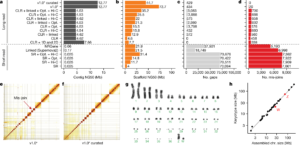The Substances of Concern in Products (SCIP) database is now the new requirement as stated by the European Chemical Agency (ECHA). This commenced on January 5th, 2021. This database is a part of the European Union’s Waste Framework Directive (WFD), and they require reports of the Substances of Very High Concern (SVHCs). REACH now requires the companies to report the SVHCs to their customers if the levels reach the 0.1% threshold within any of the articles of the product. Hence, the reporting requirements of the SCIP are not completely new, but the SCIP Database will require a bit more reporting and oversight.
What are the requirements stated by SCIP Database?
Here are the specific requirements as stated:
Reporting enforcement and transparency
The REACH SVHC requirements already state that the chemicals used in the products must be reported to the customers using them, but the EU regulators must not be notified essentially. With the SCIP Database, the EU regulators will be able to audit and enforce any reporting that is required and which is lacking in the central database. The EU regulators will then be making this vast majority of the information in the SCIP Database searchable by any interested stakeholder who is even outside the EU. This will make the database publicly accessible.
Consistent reporting format
The SCIP Database will be creating a very consistent format for the SVHC reporting. There are broad parameters set and provided by the REACH for how the SVHC reporting will be done, but there are no specifics provided on the format. Hence, the REACH SVHC communications are streamlined, and all the customers and suppliers will be getting mutually acceptable formats.
Additional SCIP Database requirements
The SCIP Database will have certain requirements for additional information which are way beyond the existing SCIP Database reporting. The product categories and uses will be identified by the TARIC codes. This might also want you to solicit new data from your existing supply chain as most of it has not been reported during the REACH SVHC reports.
What will be the impact of the SCIP Database?
The database is going to change the following:
- Present any increased risks to businesses
- Facilitate better regulatory enforcement
- Create trained internal resource management
Your work will be a lot easier with the help of the Enviropass SCIP database, which ensure complete accuracy of details.




